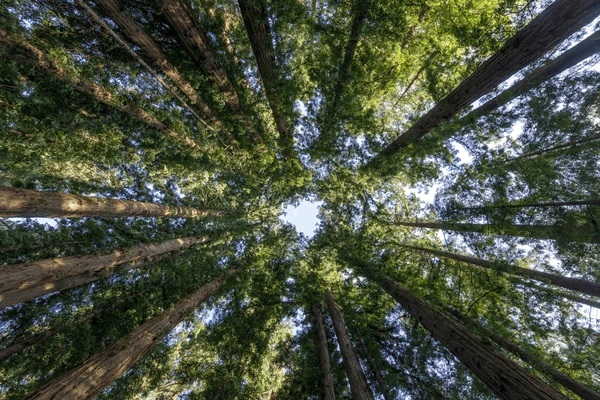September 8, 2024 – Coastal redwoods (Sequoia sempervirens) are trees that we’ve heard and read about since our youth. They’re the tallest plant on Earth. Thirty-seven are 330’ tall & the tallest is 360’ tall, and they are still growing! Their slender thickness, however, prevents them from being the largest trees. That honor goes to their cousin the shorter (by a little) but more massive Sequoia gigantia or giant sequoia. Both grow in California, but in different regions. Coastal redwoods, as the name implies, grow along the pacific coast in foggy areas. Actually, redwoods were once the largest overall, but all those trees were cut down by loggers.
The pacific coast is the key to their size, as ocean winds bring in fog containing moisture for their needle leaves. Their height means moisture has great difficulty getting up the tree to the leaves. Without the moisture brought in from the ocean, the trees, at their current height, could not long survive. Even with the additional moisture, coastal redwoods are commonly referred to as a dying species.
Redwoods are highly resistant to fires, due to the thickness of their bark, which is several inches thick and is highly fire resistant. If fire completely destroys the canopy, redwoods will regenerate the foliage, although it may take a hundred years!
Regeneration by seed almost never occurs in dense redwood forests. Rather, regeneration occurs from dead logs or sprouts from roots. When this occurs, the new trees are incapable of photosynthesis, as they have no chlorophyll in their needles. Water, carbohydrates and other nutrients are provided solely by the root systems of their neighbors. This allows redwoods to outcompete other conifers, even when growing in deep shade of their parent trees.
If a redwood grows with a lean, gravity will eventually kill it by causing it to fall.







